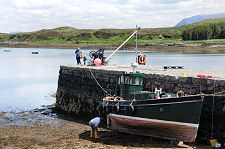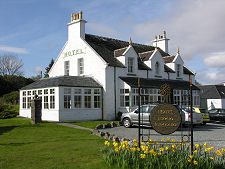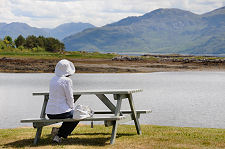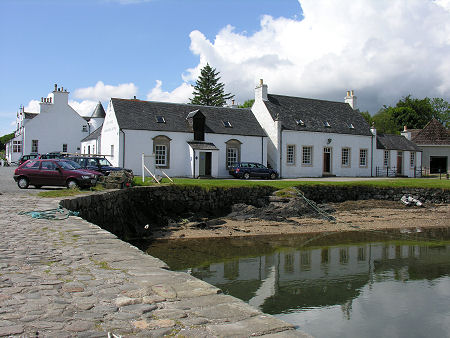 Isleornsay from the Pier |
The A851 from Broadford along the Sleat Peninsula to Armadale has been transformed in recent years. All the old single track road, has been replaced by a high quality road that shortens journey times considerably and effectively brings Sleat much closer to the rest of Skye.
Not far beyond where the road from the north first meets the coast, look out for a turning on your left to Isleornsay, one of the most attractive villages on Skye. Conveniently located about half way along Skye's south-east coast, the tidal island of Ornsay forms and shelters a superb natural harbour. Isleornsay or, in Gaelic, Eilean Iarmain wraps around the harbour before extending south-west along the shore to become Camuscross.
The natural harbour here was exploited from the 1700s or possibly even earlier by the MacDonalds who owned this part of Skye. By 1820, stone piers had been built, and Isleornsay was a thriving herring fishing port. It also became a stopping off point for steamers coming from Glasgow via the Crinan Canal.
The steamer service combined with the beautiful setting and views led to it becoming a popular resort. Perhaps this is why 1820 was also the year in which Isleornsay became the proud owner of Skye's first public toilet.
The building of railways to places like Oban, Mallaig and Kyle of Lochalsh in the latter half of the 1800s brought decline to more remote resorts that had been dependant on steamers for their custom, and Isleornsay was one of them.
This history is part of what makes Isleornsay so attractive today. The visitor finds a beautiful, largely white painted, settlement clustered around its harbour. The Hotel Eilean Iarmain dominates this part of the village, and comes complete with comfortable rooms in the hotel itself and the house opposite, and suites in the old stable block. It also serves excellent food in its restaurant and in the Praban Bar.
Nearby you can also find the attractive "Gallery An Talla Dearg" overlooking the pier. This hosts a range of exhibitions that change on a regular basis. The interior photograph on the left was taken during an exhibition by Laurence Broderick, whose bronze otter sculptures can be seen "in the wild" at the entrance of the Bright Water Visitor Centre in Kyleakin and in one of the ornamental ponds in Armadale Castle Gardens.
Looking back towards mainland Scotland it is easy to see why Isleornsay was so popular in the 1800s. The foreground view is occupied by the island of Ornsay, while in the background are the mountains of the mainland. The island of Ornsay is accessible on foot at low tide, or by boat at other times.
The Ornsay Lighthouse is actually sited on a nearby islet called Eilean Sionnach. It was first lit in 1857, and automated just over a century later in 1962. On the island of Ornsay itself are the ruins of a nunnery chapel. In recent years the iconic view of the lighthouse from Isleornsay has been increasingly blocked by the growth of trees on the islet, which is a great shame.
If you are looking for an attractive and quieter alternative to the usual places to stay on Skye, then Isleornsay is well catered for. And if you are simply looking for an idyllic location in which to spend a little time while touring the island then, again, Isleornsay is well worth bearing in mind. We've mentioned Hotel Eilean Iarmain, while nearby Duisdale House Hotel and Toravaig House are two more excellent hotels.
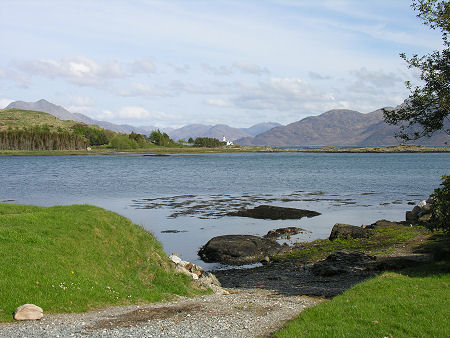 The View East from Isleornsay |

|
|
|
Visitor InformationView Location on MapWhat3Words Location: ///boom.lucky.height |
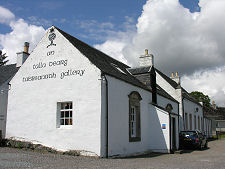 Gallery an Talla Dearg |
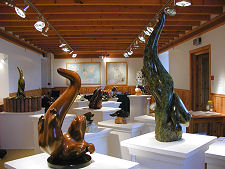 Gallery Interior |
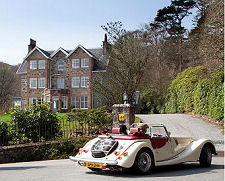 The Duisdale House Hotel (Image Courtesy Duisdale Hotel) |
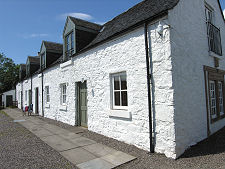 Converted Stables |
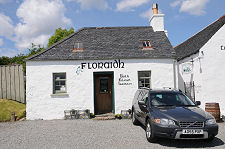 Floraidh |

